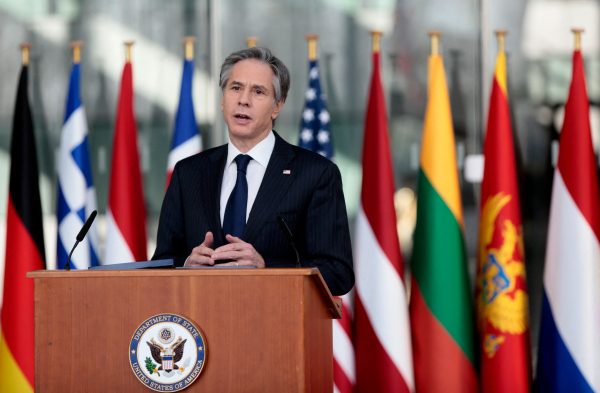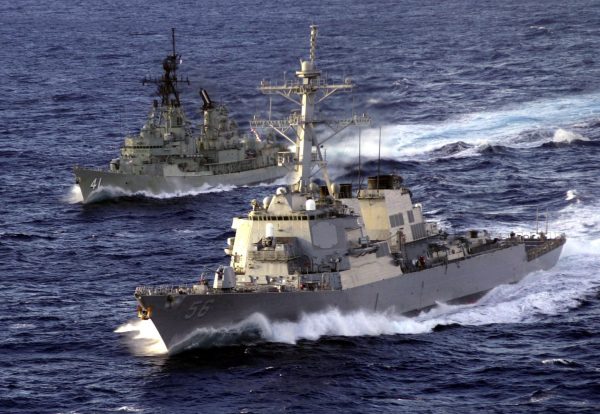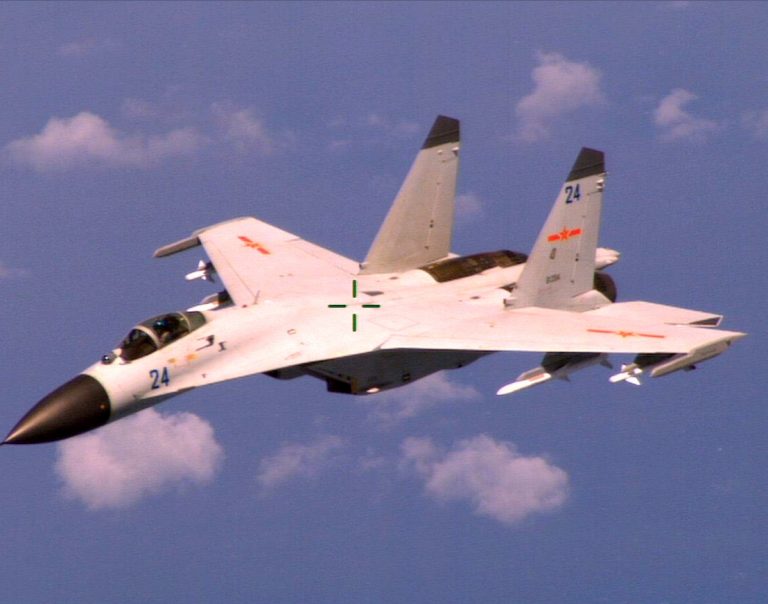The Chinese People’s Liberation Army (PLA) on April 12 sent more than two dozen aircraft into Taiwan’s air defense identification zone, the biggest such inclusion in more than a year. The flight came a day after top U.S. diplomat Antony Blinken warned Beijing that invading Taiwan would be a “bad idea.”
The flight of 25 aircraft consisted of 18 J-16 and J-10 fighter jets, and four H-6 bombers, which are capable of delivering nuclear weapons. Other aircraft in the group included anti-submarine planes and an airborne early warning and control aircraft.
Recent months have seen near-constant harassment of Taiwan — the strategically placed, democratically governed island Communist China sees as part of its territory — by PLA air and naval elements. On April 7, the PLA sent a flight of planes and several combat vessels near Taiwan-held land.
PLA Navy recon ships, along with a frigate, the Yucheng, were spotted off the coast of Orchid Island, while the PLA sent 15 planes, including 12 fighter jets, into Taiwan’s Air Defense Identification Zone, as reported by Taiwan News.
New guidelines
The aggression appeared to come in response to missile tests conducted by Taiwan’s National Chung-shan Institute of Science and Technology scheduled from April 7 to 9 in the Orchid Island and Green Island regions. The Chung-shan Institute conducted an additional set of missile tests from April 13 to April 16 between Jiupeng Air Force Base and Orchid Island.
Success
You are now signed up for our newsletter
Success
Check your email to complete sign up
Days after the provocation, the US State Department issued new guidelines for diplomatic interactions with the Republic of China (ROC), as Taiwan is officially called.
The ROC government used to run all of China before it was forced off the mainland by the communist army in 1949. Because of the One China Policy, Taiwan is not formally recognized as a country by the United States.
“The Department of State has issued new guidelines for U.S. government interaction with Taiwan counterparts to encourage U.S. government engagement with Taiwan that reflects our deepening unofficial relationship,” a State Department announcement said.
The new guidelines allow American diplomats more freedom in their dealings with Taiwan. This policy was originally implemented under former U.S. President Trump. It was cancelled on Jan. 20 by the incoming Biden administration before being reintroduced in its current, but scaled-back form.
While former U.S. Secretary of State Mike Pompeo advocated heightening Taiwan’s international profile by lifting “all restrictions” on interactions with the ROC, the new policy under current state secretary Antony Blinken will have “guard rails” in place to comply with the One China Policy, according to a U.S. official who spoke with the Financial Times.

For example, U.S. officials would be prohibited from attending high-profile functions on major ROC holidays, and they would not be allowed to display the ROC flag when meeting with Taiwanese officials. The official, whose name the Financial Times did not disclose, said the guidelines were circulated via memo and not made public.
On April 11, Blinken appeared on NBC’s “Meet the Press” program. He said had “real concern” for the Chinese Communist Party (CCP) aggression against Taiwan. When asked how the US would respond to an invasion of Taiwan by the PLA, he said that it would be a “serious mistake” by Beijing, but declined to elaborate on such a hypothetical situation.
“All I can tell you is we have a serious commitment to Taiwan being able to defend itself,” Blinken said. “In that context, it would be a serious mistake for anyone to try to change that status quo by force.”
Rising stakes
On April 6, AP reported that the PLA Navy was holding drills near Taiwan. The drills included the Liaoning, one of the PLA’s two aircraft carriers. The Chinese Communist Party claims the drills are routine and part of an annual schedule.
According to an April 6 report by Reuters, Joseph Wu, ROC Foreign Minister, said the United States was concerned about Beijing’s stance. Based on what he called his “limited understanding of American decision makers,” Wu said, “they clearly see the danger of the possibility of China launching an attack against Taiwan.”
Wu also said that the Taiwanese were “willing to defend ourselves without any questions, and we will fight the war, if we need to fight” it.
In response to Beijing’s posturing, the United States sent one of its aircraft carriers, the USS Theodore Roosevelt, to the South China Sea. Like the Chinese, the US Navy also claimed that the carrier’s presence was to “conduct routine operations.”

On April 7, America also sent the USS John S. McCain destroyer to the Taiwan Strait.
In August 2020, the U.S. approved a sale of 66 F-16V fighter jets to Taiwan as part of an arms package including upgraded missiles. The US also recently agreed to sell Taiwan the advanced M1A2 Abrams tank.
U.S. State Department spokesman Ned Price said his country had “great concern” about military intimidation from mainland China. He said the United States’ commitment to Taiwan sovereignty was “rock solid.”
Price said that “as reflected in the Taiwan Relations Act, the United States maintains the capacity to resist any resort to force, or other forms of coercion, that would jeopardize the security or the social or economic system of the people on Taiwan.”
A statement by the US Navy says that the American destroyer’s “transit through the Taiwan Strait demonstrates the U.S. commitment to a free and open Indo-Pacific. The United States military will continue to fly, sail, and operate anywhere international law allows.”
In March, the US and Japan agreed to increase their military cooperation in the East China Sea. In addition to Taiwan, this sea is the location of Japan’s Senkaku islands, and like Taiwan, the Senkaku Islands are also claimed by the CCP.
The US Senate has introduced a new bipartisan bill to counter China. The bill condemns Beijing as an “authoritarian” regime and aims to defend democracy.
Leo Timm contributed to this report














